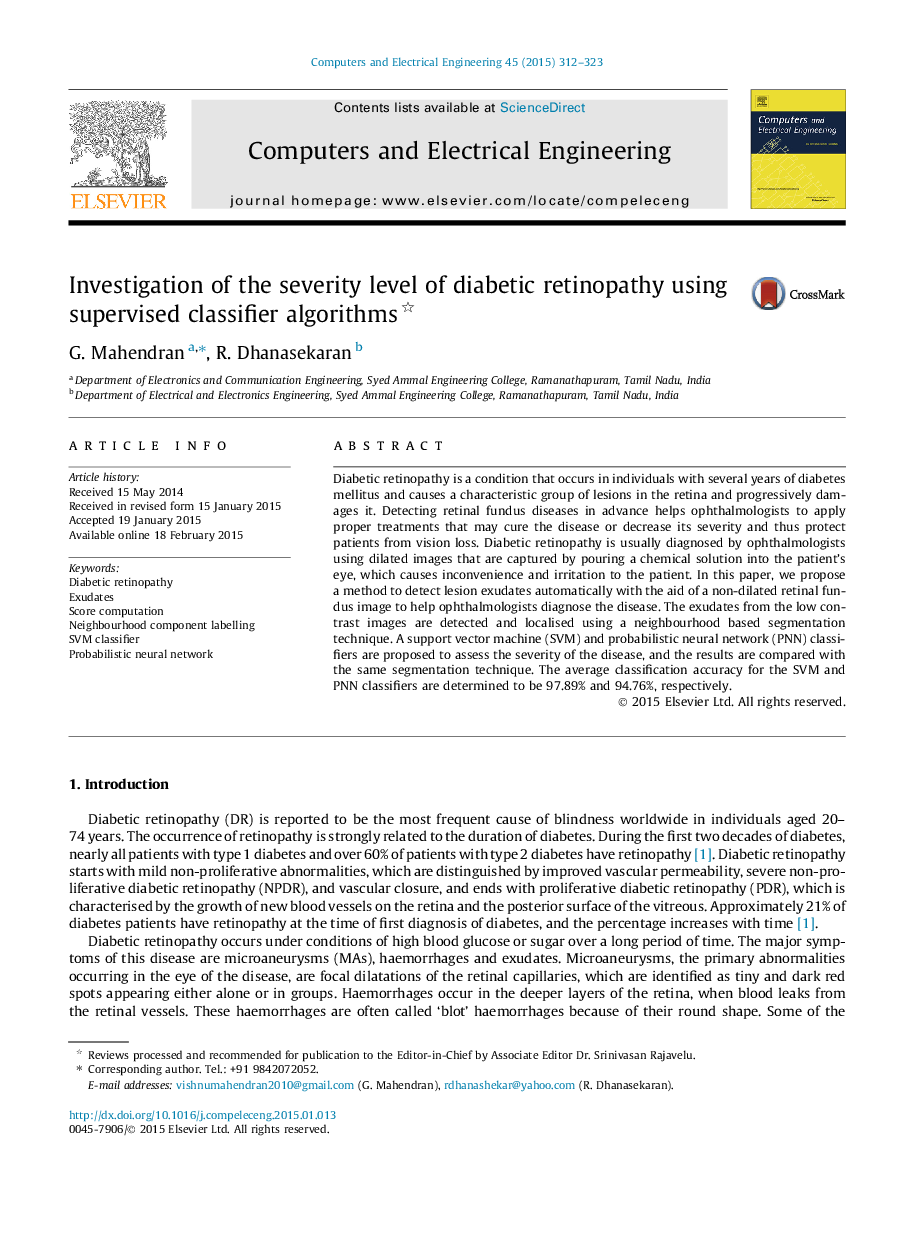| کد مقاله | کد نشریه | سال انتشار | مقاله انگلیسی | نسخه تمام متن |
|---|---|---|---|---|
| 453687 | 694993 | 2015 | 12 صفحه PDF | دانلود رایگان |
• A method for investigating the severity of diabetic retinopathy is proposed.
• Earlier diagnosis of the disease prevents vision loss in diabetic patients.
• The exudates are the major symptoms and are detected via a segmentation algorithm.
• The degree of severity is assessed using the SVM and PNN classifier algorithms.
• The SVM classifier is found to provide better results than the PNN classifier.
Diabetic retinopathy is a condition that occurs in individuals with several years of diabetes mellitus and causes a characteristic group of lesions in the retina and progressively damages it. Detecting retinal fundus diseases in advance helps ophthalmologists to apply proper treatments that may cure the disease or decrease its severity and thus protect patients from vision loss. Diabetic retinopathy is usually diagnosed by ophthalmologists using dilated images that are captured by pouring a chemical solution into the patient’s eye, which causes inconvenience and irritation to the patient. In this paper, we propose a method to detect lesion exudates automatically with the aid of a non-dilated retinal fundus image to help ophthalmologists diagnose the disease. The exudates from the low contrast images are detected and localised using a neighbourhood based segmentation technique. A support vector machine (SVM) and probabilistic neural network (PNN) classifiers are proposed to assess the severity of the disease, and the results are compared with the same segmentation technique. The average classification accuracy for the SVM and PNN classifiers are determined to be 97.89% and 94.76%, respectively.
Figure optionsDownload as PowerPoint slide
Journal: Computers & Electrical Engineering - Volume 45, July 2015, Pages 312–323
